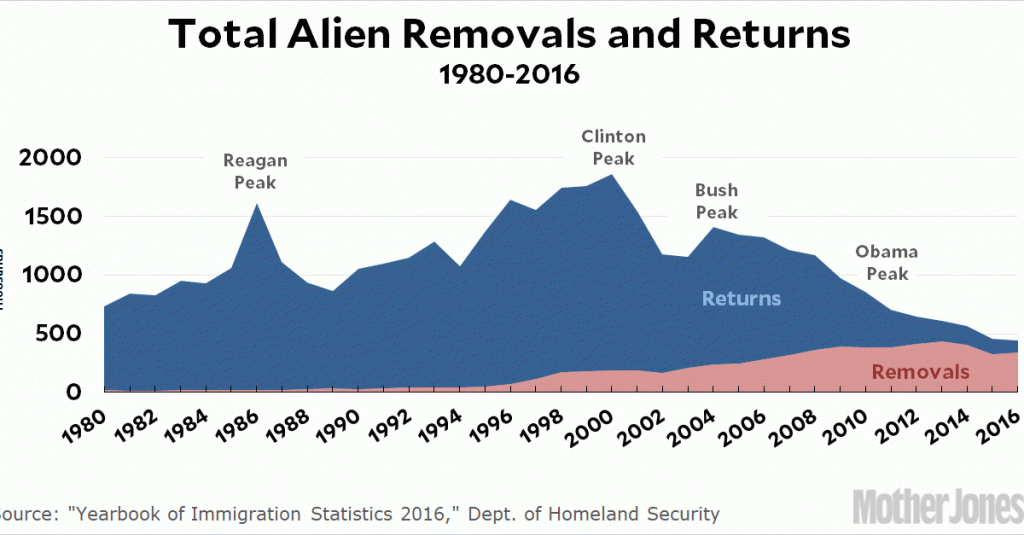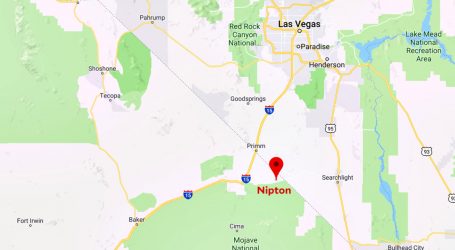Democrats and Latinos: A Followup
Looking for news you can trust?Subscribe to our free newsletters.
Yesterday I defended Democrats against the charge that they hadn’t done enough to deserve a big Latino turnout on Election Day. I got a couple of annoyed replies to that, which I want to share since they contain widely accepted misinformation. Here are the relevant excerpts, lightly edited:
First reply: [Gustavo Arellano] says “The North American Free Trade Agreement, courtesy of President Clinton, helped to destroy Mexico’s economy and forced millions to migrate to el Norte.” I think it’s wrong to assume he’s referencing the fall of the peso. Just like here, the dollar is not the economy. The vast majority of Mexican immigrants who’ve come to the US have come from the southern states and they were hit hard by the fall in corn prices as we forced Mexico to open its borders to our subsidized corn.
Second reply: I had to leave Mexico in 1990 just as NAFTA was starting. Over the next 20 years I saw whole towns empty out of males, because their traditional crops could no longer compete with GRINGO industrial agriculture. There is plenty to analyze in the relationship between Mexico and the USA but your weak cursory defense of the Clintons and the DEPORTER IN CHIEF is not going to sway many Latinos….I don’t know what will happen Tuesday. But one thing is for sure, LATINOS are not going to be a tsunami.
This is difficult. Everybody feels a lot of different things about this, especially those who are deeply invested in it. I’m not. And I’m not Latino. And I’m not here to tell people how they should feel.
But facts are important too. They matter. They affect us all. It’s certainly true that Democrats haven’t given Latinos everything they’ve wanted, but no party gives anyone everything they want. In the real world you need to judge parties based on what’s possible, and on that score (a) Democrats have provided enormous support for the Latino community while (b) Republicans have been as hostile as any party could be, especially since Donald Trump became president. If—if— it’s true that lots of Latinos are staying home because their leadership has convinced them that both parties suck, that’s an enormous mistake. So let’s briefly review the facts that animate these two emails. They aren’t all the facts, but they’re the big ones.
NAFTA
NAFTA was negotiated by George H.W. Bush and approved by Congress under Bill Clinton—and there’s little reason to think it hurt Mexico’s growth. The best evidence indicates that it’s had a modest but positive effect on the Mexican economy—though, as usual with trade agreements, some people benefited more than others. More on this below.
The Peso Crisis
I can’t say for sure what Arellano is talking about, but the only event following NAFTA that could conceivably be thought of as “destroying” the Mexican economy is the peso crisis of 1995. This had nothing to do with either NAFTA or the United States. It was a currency crisis, just like the ones we’ve seen from other countries over the past 20 years that have issued debt denominated in dollars. Larry Summers, who was then undersecretary for international affairs, recalls that President Clinton understood just how serious it was:
Secretary Rubin set the stage for it briefly. Then, as was his way, he turned to someone else, namely me, to explain the situation in more detail and our proposal. And I said that I felt that $25 billion was required, and one of the President’s political advisers said, “Larry, you mean $25 million.” And I said, “No, I mean $25 billion.” … There was a certain pall over the room, and one of his [Clinton’s] other political advisers said, “Mr. President, if you send that money to Mexico and it doesn’t come back before 1996, you won’t be coming back after 1996.”
Despite this warning, Clinton tried to pass an aid package. What’s more, when Congress turned it down he intervened anyway: in the face of opposition from both parties, he withdrew $20 billion from the Exchange Stabilization Fund—possibly illegally—and was instrumental in getting the rest of the world to approve IMF and World Bank loans that totaled another $30 billion. Bill Clinton was as good a friend to Mexico as they could have asked for.
Corn Prices
NAFTA was passed in 1994, so it had nothing to do with farmers migrating north in 1990. What did cause this migration was a unilateral opening of the Mexican economy during the 1980s. Under two successive presidents, Mexico joined the WTO, began removing subsidies and price controls on corn, and allowed foreign corporations easier entry to the Mexican market. This did indeed have an effect on traditional rural corn farmers, but it had nothing to do with the United States. It was, rather, a reaction to Mexico’s economic collapse of the 70s and the growing global tide of neoliberalism.
NAFTA was the final building block of this economic reform, and today Mexico is considered one of the most open economies in the world. Exports of corn increased after NAFTA was passed and exports of agricultural products have nearly tripled.
Obama as the Deporter in Chief
This gets a little complicated. Back in the day, if the US government sent someone back to Mexico, it was a deportation. For the past 20 years, however, we’ve counted removals and returns. A removal usually follows a legal proceeding and applies to undocumented immigrants who are apprehended away from the border by ICE. A return is much simpler: it refers to someone caught near the border by the Border Patrol who is simply escorted back to Mexico. In common use, deportation these days refers only to immigrants who are removed.
So: did Obama deport more undocumented immigrants than any other president in history? For starters, here’s a chart showing the total number of all returns and removals:
There’s something odd here. The total number of undocumented immigrants who were returned to their homes has declined steadily since 2004. At the same time, the number of removals increased steadily through 2013. This means you can truthfully say that (a) the number of “deportations” increased to an all-time high under Obama, and (b) the total number of undocumented immigrants returned to their homes decreased to all-time low under Obama. What’s going on?
It’s a trick. Starting in the Bush administration, and continuing under Obama, a lot of people who normally would have been returned were forced through court proceedings and formally removed. There were various reasons for this, which we can skip for the moment, but the bottom line is that the number of undocumented workers returned to their home country plummeted under Obama from about 1.2 million in 2008 to 450,000 in 2016. However, for PR reasons Obama preferred to advertise the fact that “deportations”—i.e., removals—were up under his administration. It made him look tough on immigration.
Why did Obama accept this state of affairs? That’s easy: he wanted to pass an immigration bill, and to do that he needed to convince Republicans that he was keeping border security tight. Thus, in 2013, when he was hoping to pass the bill, he was happy to say that deportations had increased from 360,000 to 430,000 under his administration.
There are lots of ways you can spin this. A removal is more serious than a return, so you can argue that Obama was, in some sense, tough on illegal immigration. But in a broader sense, it’s obvious that this is mostly a semantic ploy. Overall border enforcement pretty obviously got weaker under Obama—and more focused on removing felons—even when you account for the drop in border crossings during this period. Painting him as the “deporter in chief” was probably good politics at the time the immigration bill was under consideration, but it doesn’t really have much basis in reality.
Beyond that, of course, once the immigration bill failed, Obama did everything he could for the Latino community using executive orders. We can argue about whether his plan to win over Republicans was ever a good one in the first place, but his motivations were solid. Like Clinton with Mexico, he was, overall, a good friend to Latinos.





